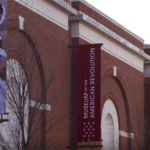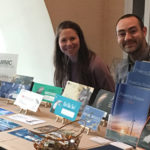Bigger. Better. Faster.
For those of us leading visitor-based cultural institutions, these words often spawn dread in the pit of our stomachs from the sense of unyielding pressure to do more, deliver more, achieve more. Striving to meet the never-ceasing demands from an audience wooed by ever-increasing competition for their attention can feel a lot like being a hamster on a wheel that steadily increases its speed. But what if instead of viewing Bigger. Better. Faster. as an onerous mandate, we took this mantra for what it really is: an advantageous opportunity to adopt a new way of thinking to stay ahead of the next evolution?
Embracing Bigger. Better. Faster. will help organizations—not only visitor-based cultural institutions but all sectors—maintain a vital sense of relevance to their audiences. By employing new, innovative thinking that effectively addresses the needs and interests of audiences (Better), and by doing so more expeditiously and proactively (Faster), organizations can make a powerful impact on their audiences and even the general public (Bigger).
Many of our clients at Schultz & Williams are strong, thriving organizations doing critically important work across the social services, education, healthcare, conservation and cultural attractions sectors. In many cases, they have managed to do this in the face of tremendous evolution over the last several decades. Some have even managed to find ways to adapt and thrive in industries that are seemingly in constant flux and/or impacted by weather and other circumstances beyond their control.
The challenge and opportunity that most of our clients face is how to identify, anticipate, prepare for and ultimately navigate the next evolution. These changes—small and large, personal and political, customer-facing and in-house—challenge organizations to remain relevant not only to survive, but to thrive and ensure they are providing the highest quality programs and services to meet the ever-changing needs and interests of their core audiences.
Although we might not fully understand or know what the next evolution will entail or what “relevance” means for our clients/guests, it is critical that organizations invest in new thinking and develop new ways of executing their missions that establish what “relevance” means for them. The most successful organizations will not wait for others to take this step. They will lead the effort to proactively define their futures, occupying the forefront of the next evolution rather than responding reactively and following the trends set by others.
What does this all mean for the cultural attractions sector, specifically for our zoo and aquarium clients? Zoos and aquariums must invest the time and resources in new thinking and embrace new opportunities in order to both lead and maintain their relevance. Bigger. Better. Faster. must serve as a rallying cry to inspire new thinking and embolden decisive action in this effort. Zoos and aquariums must move forward with the confidence to depart from the more traditional and established norms while also responding to larger shifts in how audiences engage with their environments by considering the following ideas:
- Emphasizing Experience-First PlanningIt is critical to recognize and embrace that our guests want more experiences that are engaging, unique and special. Guests are willing to pay for these opportunities that move them away from a passive experience to one that is more active and participatory.Embracing this new reality shouldn’t result in just a one-off encounter or event, but instead in a dynamic philosophy that is fully interwoven throughout all facets of the guest’s visit, ultimately redefining what a guest experience really is. And it challenges us to think of planning from a perspective different from facility or capital needs, redirecting our focus to “experience-first planning.”
“Experience master plans” must lead/leverage an organization’s traditional facility master plan and move an organization away from the usual capital focus to one that emphasizes new experiences and engagements.
Experiences are cheaper and often less cumbersome to implement (Faster). They inspire new reasons to visit and return to the zoo or aquarium (Better). They are also more engaging and as a result, leave a more lasting impact on the guest (Bigger).
Guests are willing to pay for these experiences, allowing zoos and aquariums to generate incremental and new revenues. In addition, because experiences are less expensive than investing in a new or renovated exhibit, it allows smaller organizations or those with more limited financial resources to also maintain relevance within their communities. Furthermore, experiences are more appealing to younger potential visitors, particularly millennials.
Perhaps most importantly, experiences allow zoos and aquariums to better tell their story and convey their important role in the community and in global conservation efforts. Experiences also enable zoos and aquariums to provide new and different perspectives of the animals and their lives, leading to greater impact on guests, giving them reasons to return, and creating stronger, more caring connections between audiences, animals and the natural world overall.
- Embracing TechnologyAs technology continues to advance and become more prevalent, it is crucial that zoos and aquariums embrace that many of these technologies, particularly mobile apps, will soon replace the traditional hardware and software that have been used to manage ticketing, food purchases and even membership programs.
Fortunately, these new technologies will require less infrastructure, reducing staffing, maintenance and operating expenses. They will also help to elevate cash management and facilitate the ease and frequency of data collection and analysis (Faster).
The additional connectivity made possible by these new technologies also allows for more opportunities to draw audiences in, essentially providing for an expanded zoo or aquarium experience that goes beyond the in-person experience with added opportunities for engagement both before and after the actual visit (Bigger).
With less infrastructure needed to support the housing of the hardware and software and subsequently less of a need for points of sale, zoos and aquariums will be able to reduce and refocus the use of many of these facilities, perhaps opening the space up for new experiences and engagement (Better).
Because technology is dynamic, changes can more easily be made to tailor it to a wide variety of demographics, allowing for greater connection with guests of all ages and backgrounds.
- Changing the ConversationIn a recent interview, Jim Breheny, director of the Bronx Zoo and executive vice president of the Wildlife Conservation Society, discussed the role of zoos and aquariums in supporting global conservation. Jim explains that “we can’t just be well-run, modern menageries. That is not our goal. For us to ethically keep wild animals in zoos and aquariums, we not only have to meet our commitment to providing the best care and welfare for each of those individual animals that we have…but we have a real obligation…to tell the story of the conservation pressures that these species are facing in the wild.” Jim goes on to say that we need to “inspire the appropriate sense of awe,” create a connection, and foster greater caring for the animals in order to motivate audiences to join and participate in the collective conservation message.Telling this story effectively means changing the conversation and going beyond focusing on the high-quality care the animals receive. It means crafting messaging with the ultimate goal of not simply educating others about conservation, but getting them to genuinely care about the animals and what happens to them both in the zoo or aquarium and in the wild (Bigger).
One way to do this is by using enhanced, accessible technology (#2) as well as on-site “ambassadors” to provide powerful experiences (#1) as the vehicles through which stories are told to guests. Focus on delivering fun, engaging experiences that articulate these compelling stories that elicit a stronger, more personal connection to the animals (Better, Faster).
Changing the conversation to highlight conservation and engender these powerful connections requires a shift in an organization’s marketing strategy to one that is proactive and highly informed by audience needs and interests. It also requires a shift in perspective, from regarding the crafting and delivery of the messaging and its content as the ultimate goal to instead being more effectively employed as the tool for achieving a new level of caring and commitment.
The examples above are straightforward illustrations of the powerful impact that new thinking can have on an institution. We can shift our thinking by responding to and regarding change as an exciting opportunity to define our future. We can engage with our audience and inspire action to advance our missions. We can ensure our long-term sustainability and viability. We can espouse Bigger. Better. Faster. not only as a mantra, but as an imperative guide to creating the future we and our guests want.
The next evolution is knocking at the door.
Are you ready?




